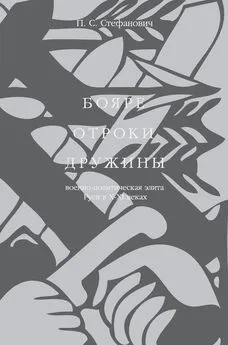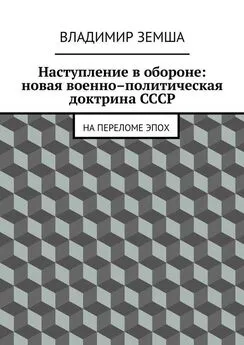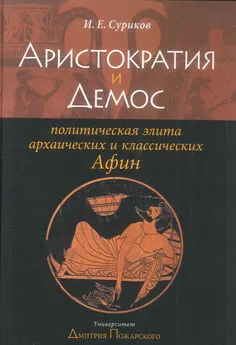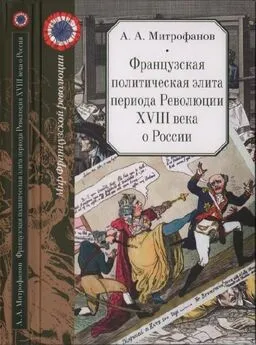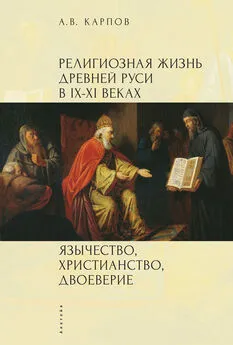Петр Стефанович - Бояре, отроки, дружины. Военно-политическая элита Руси в X–XI веках
- Название:Бояре, отроки, дружины. Военно-политическая элита Руси в X–XI веках
- Автор:
- Жанр:
- Издательство:Литагент «Индрик»4ee36d11-0909-11e5-8e0d-0025905a0812
- Год:2012
- Город:Москва
- ISBN:978-5-91674-237-4
- Рейтинг:
- Избранное:Добавить в избранное
-
Отзывы:
-
Ваша оценка:
Петр Стефанович - Бояре, отроки, дружины. Военно-политическая элита Руси в X–XI веках краткое содержание
Задача исследования, представленного в книге, – определить формы и состав элиты древнерусского общества в X–XI вв., особенно той её части, которая участвовала в принятии важнейших военных и политических. Анализируются данные древнейшего летописания, договоров Руси и Византии X в., «Русской Правды» и других источников в широкой сравнительно-исторической перспективе. Подробно описываются группы, которые в XI в. составляли важнейшие элементы элиты Руси, – знать (бояре) и военные слуги князей (отроки или гридь).
Бояре, отроки, дружины. Военно-политическая элита Руси в X–XI веках - читать онлайн бесплатно ознакомительный отрывок
Интервал:
Закладка:
• Víta Methodíí 1870 – Vita Sancti Methodii russico-slovenice et latine, edidit Fr. Miklosich, Vindobonae 1870.
• von Olberg 1991 – von Olberg G., Die Bezeichnungen für soziale Stände, Schichten und Gruppen in den Leges barbarorum, Berlin-New York 1991.
• von See 1964 – von See K., Altnordische Rechtswörter. Philologische Studien zur Rechtsauffasung und Rechtsgesinnung der Germanen, Tübingen 1964.
• Waitz 1844/1953 – Waitz G., Deutsche Verfassungsgeschichte: Die Verfassung des deutschen Volkes in ältester Zeit, Bd. 1, Darmstadt 1953 (4-е издание последнего прижизненного, вышедшего в 1879 г.; 1-е изд.: 1844 г.).
• Wasilewski 1958 – Wasilewski Т., Studia nad skladem spolecznym wczesnošreniowiecznych sil zbrojných na Rusi // Studia wczesno-šreniowieczne, t. IV, Wroclaw-Warszawa 1958, с 301–389.
• Weingart 1934 – Weingart M., První česko-církevněslovanská legenda o svatém Václavu. Rozbor filologický // Svatováclovský sborník. Na památku 1000. výročí smrti knížete Václava svatého. I: Kníže Václav svatý a jeho doba, Praha 1934, с 863-1088.
• Weiser 1927 – Weiser L., Altgermanische Jünglingsweihen und Männerbünde: ein Beitrag zur deutschen und nordischen Altertumsund Volkskunde, Brühl 1927.
• Wenskus 1961 – Wenskus R., Stammesbildung und Verfassung. Das Werden der frühmittelalterlichen qentes, Köln etc. 1961.
• Wenskus 1974 – Wenskus R., Probleme der germanisch-deutschen Verfassungs– und Sozialgeschichte im Lichte der Ethnosoziologie // Historische Forschungen für Walter Schlesinger, hrsg. von Helmut Beumann, Köln 1974, с 19–46.
• Wenskus 1992 – Wenskus R., Die neuere Diskussion um Gefolgschaft und Herrschaft im Tacitus' Germania // Beiträge zum Verständnis der Germania des Tacitus 1992, с. 311–331.
• Werner 1994/1999 – Werner K. F., Adel– «Mehrzweck-Elite» vor der Moderne? // Werner K. F., Einheit der Geschichte. Studien zur Historiographie, hrsg. von W. Paravicini, Sigmaringen 1999, с 120–136 (1-е изд.: 1994 г.).
• Whitelock 1952/1974 – Whitelock D., Beginnings of English Society, Harmondsworth 1974 (1-е изд.: 1952 г.).
• Wihoda 2007 – Wihoda M., Kníže a jeho věrní. Kosmas o světě předáků a urozených // Šlechta, moc a reprezentace 2007, с 11–30.
• Wolverton 2001 – Wolverton L., Hastening towards Prague. Power and Society in the Medieval Czech Lands, Philadelphia 2001.
• Woolf 1976 – Woolf R., The Ideal of Men Dying With Their Lord in the Germania and in The Battle of Maldon // Anglo-Saxon England, vol. 5, Cambridge etc. 1976, с 63–81.
• Wormland 1999 – Wormland P., Review: Evans S., Lords of Battle // EHR, vol. CXIV, No. 457 (1999), p. 672–673.
• Worthy, Zuckerman 2004 – Wortley J., Zuckerman C, The Relics of Our Lord's Passion in the Russian Primary Chronicle // BB, т. 63 (88), 2004, с. 67–75.
• Žemlička 1995 – Žemlička J., Das Reich des bömischen Boleslavs und die Krise an der Jahrtausendwende // Archeologické rozhledy, t. XLVII (1995), с 267–278.
• Žemlíčka 1997 – Žemlička J., Čechy v době knížecí (1034–1198), Praha 1997.
• Žemlíčka 1998 – Žemlička J., «Dvacet pánů» české země. К vymezení panujícího rodu v 11. a 12. století // Časopis Matice moravské, vol. 17, 1998, с 293–309.
• Žemlíčha 2000 – Žemlička J., Gemeinsame Züge der mitteleuropäischen Staaten // Europas Mitte um 1000, hrsg. von Alfried Wieczorek und Hans-Martin Hinz, Bd. 1, Darmstadt 2000, с 830–833.
• Zháněl 1930 – Zháněl S., Jak vznikla staročeská šlechta, Brno 1930.
• Ziemann 2007 – Ziemann D., The Rebellion of the Nobles against the Baptism of Khan Boris (865–866) // Post-Roman Towns, Trade and Settlement in Europe and Byzantium, vol. 2: Byzantium, Pliska, and the Balkans, ed. by Joachim Hennig, Berlin, NY 2007, с 612–624.
• Zientara 1988 —Zientara B., Spoleczenstwo polskie X–XII wieku//Ihnatowicz I., Maczak A., Zientara В., Žarnowski J., Spoleczeňstwo polskie od X do XX w., Warszawa 1988, с 37–88.
• Ziffer 2009 – Ziffer G., The gospel of Nicodemus: a new source for the history of German-Slavic contact in the high Middle Ages? // (Hidden) minorities: language and ethnic identity between central Europe and the Balkans, eds. Ch. Promitzer, K.-J. Hermanik, E. Staudinger, Wien 2009, с. 253–258.
• Žmudzki 2005 – Žmudzki P., Mieszko I i amazonki. Wsplónoty wojownicze i normy žycia rodzinnego w relacji Ibrahima ibn Jakuba // Tekst žródla– krytyka, interpretacja, red. В. Treliňska, Warszawa 2005, s. 99-126.
• Žmudzki 2009 – Žmudzki P., Wladcaiwojownicy. Narracje o wodzach, družynie i wojnach w najdawniejshej historiografii Polski i Rusi, Wroclaw 2009.
• Zuckerman 2011 – Zuckerman C, On the Kievan Letter from the Genizah of Cairo // Ruthenica, т. X, Киïв, 2011, с. 7–56.
Список сокращений для летописных памятников
• ИпатЛ – Ипатьевская летопись
• ЛаврЛ – Лаврентьевская летопись
• МосАкЛ – Московская Академическая летопись
• НС – Начальный свод
• Н1Лм – Новгородская Первая летопись младшего извода
• Н1Лс – Новгородская Первая летопись старшего извода
• Н4Л – Новгородская Четвёртая летопись
• НовСофС – Новгородско-Софийский свод
• ПВЛ – Повесть временных лет
• РадзЛ – Радзивиловская летопись
• С1Л – Софийская Первая летопись
• ТрЛ – Троицкая летопись
Summary
This study aims to define the forms and makeup of the elite in the 10 thand 11 thcentury society of Rus', and to identify those involved in making critical military and political decisions. The key challenge of such a «sociological» approach is that the Rus'ian society was rather poorly structured (just as elsewhere in Europe during early medieval time) yet far from homogenous. What mattered there was the actual power or authority rather than legal aspects.
A reasonably straightforward information on the polity called Rus' had been available since about early 10 thcentury. Its 9 thcentury «prehistory» is beyond the scope of this study; evidence on that time is scarce and controversial. Both historic and source-related factors define the upper chronological boundary of the study period as the late 11 th– early 12 thcentury. At that point the disintegration of the Rus'ian state, once relatively unified, becomes obvious and irreversible. This study relies upon the Kievan Rus'ian «classics» covering the period prior to the breakup. These sources include the 10 th-century treaties between Rus' and Byzantium; the early chronicle-writing, first of all, Povesť Vremennykh Let (“The Tale of By-Gone Years”); Russkaya Pravda (“The Rus'ian Justice”), and the earliest hagiography.
Methodologically, in this study, (i) for the pre-1000 CE period, non-chronicle sources were given priority; (ii) the chronicle evidence was analyzed in light of the results of textual studies, especially those where techniques and approaches developed by Alexey A. Shakhmatov were used; and (iii) the evidence on Rus' was compared to that on similar early medieval European societies, such as the 6 th-9 thcentury barbarian kingdoms or 9 th-11 thcentury Scandinavian and Slavic polities.
Chapter Idiscusses the concept of družina (retinue) in modern German-, English-, Polish-, Czech-, and Russian-language historiography.
Chapter IIanalyzes the usage of the word družina in 9 th-11 th-century Old Slavonic and Church Slavonic texts, as well as in Old Russian sources of the 11 th-12 thcenturies. That analysis suggests that the term družina shall not be used to describe Rus' social organization, contrary to Russian-language historiographic tradition. The early sources used družina mostly as a generic term to refer to comrades, partners, or associates. In some contexts (mainly in chronicles) the meaning was narrower – prince's (kniaz) men/army, but even defined that way the term is still not suited to refer to social groups/strata. In a scientific context, it might be applied to archaic, non– or loosely hierarchical warrior communities, but not to an advanced social organization like the one present in the 10 th—11 thcentury Rus'.
Chapter IIIdeals with the corps of princes' military servants, referred to in Rus' as otroki or – more specifically – grid' (a borrowed Old Norse word). The corps of this kind had their counterparts in northern and central Europe of 10 thand 11 thcenturies. The Czech historian František Graus called them «the grand retinue» (velkodružína). These professional warriors played a major role during the emergence of the centralized political framework, but have disappeared or degenerated as early as the 12 thcentury. Rus'ian records describe them as prosperous in the 11 thcentury and allow to trace their degeneration during the 12 thand 13 thcenturies in great detail.
Chapter IVlooks into the makeup of the 10 thcentury ruling class (based primarily on the 911, 944, and 971 AD treaties between Rus' and the Byzantium vs. data from Constantine Porphyrogenitus' treatises). Special attention is given to the emergence, over the course of the 11 thcentury, of the class of nobility to which the term boyarin (pi. boyare) has become attached. The 11 thcentury boyars have become a counterpart of the nobility as it appears in the early medieval European polities: a socially well-defined and recognized group whose members' rank/status is (mostly) hereditary, but statutory privileges are not yet formalized.
The 10 th– 11 thcentury Rus'ian elite was in flux, and its evolution reflected the complex and dynamic development of the political and social framework of the early medieval gens. In the middle of the 10 thcentury, it included (i) a small group of leaders/warlords (quasi-rulers), mostly not related by blood; (ii) noblemen related to those leaders/warlords one way or another (usually through service), and (iii) the wealthiest urban citizens. The 11 thcentury highest political leaders were princes representing the Rurik dynasty only. The nobility (boyare) and wealthy citizens have retained their positions, but were joined by warriors on princes' payroll (otrokí/gríď).
Примечания
1
Эгалитарные общества, жившие или живущие в некоем «первобытном коммунизме», исторической науке вообще не известны, да и у этнологов идут споры, применимо ли это понятие и в какой мере к современным «примитивным» обществам. Известный этнолог в очерке развития идей и дискуссий об «эгалитарных/неэгалитарных» обществах в XIX–XX вв. заключает: «most anthropologists are nowadays skeptical about the existence of a universal stage of primitive communism» (Béteille 1994, с. 1012). Общества, которые можно назвать (хотя и всё равно условно) эгалитарными, фиксируются лишь в весьма специфических природных условиях в отдельных областях Африки и Азии. Ср. также: Крадин 2001/2004, с. 149 и след.
Читать дальшеИнтервал:
Закладка:
